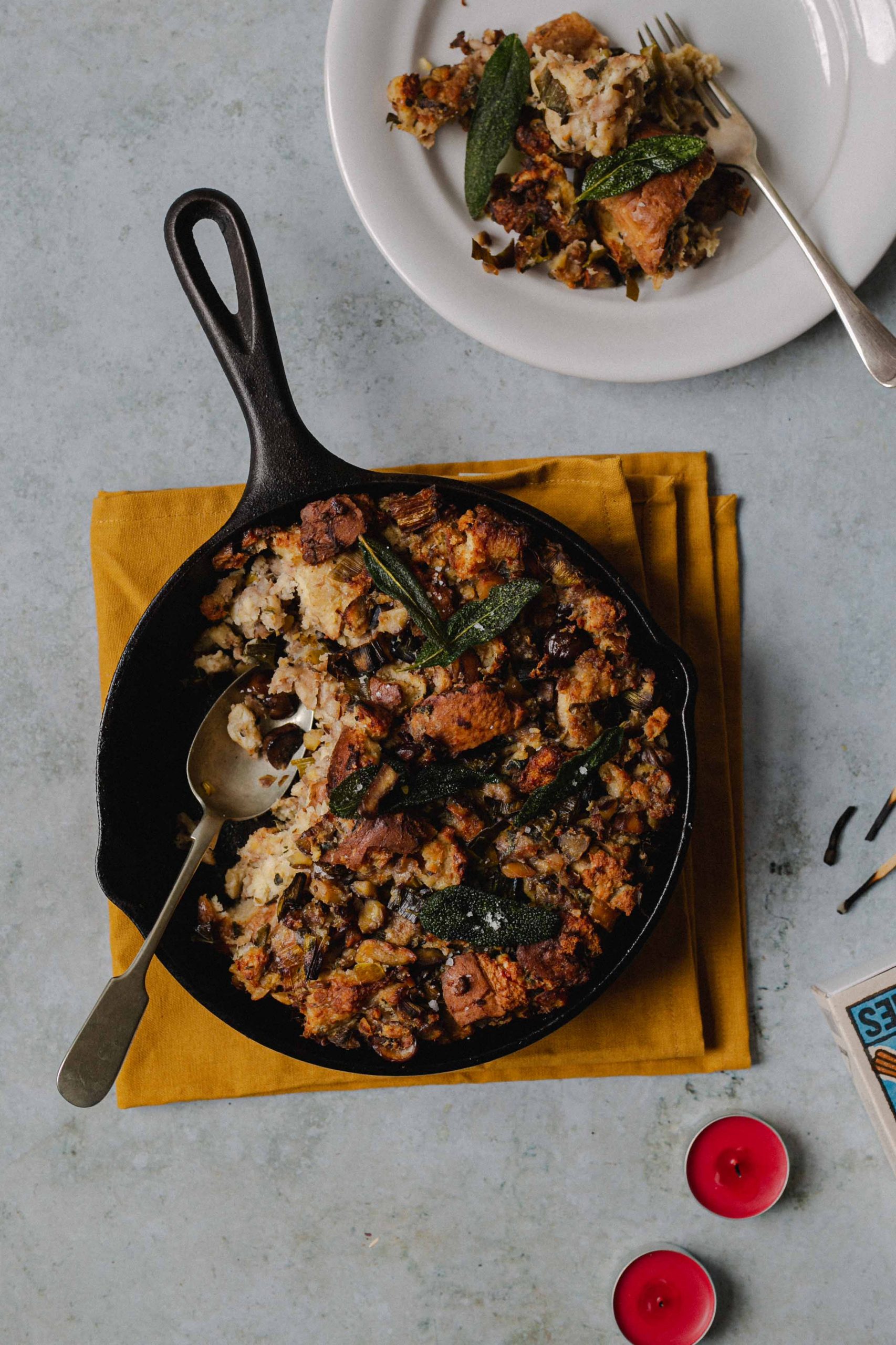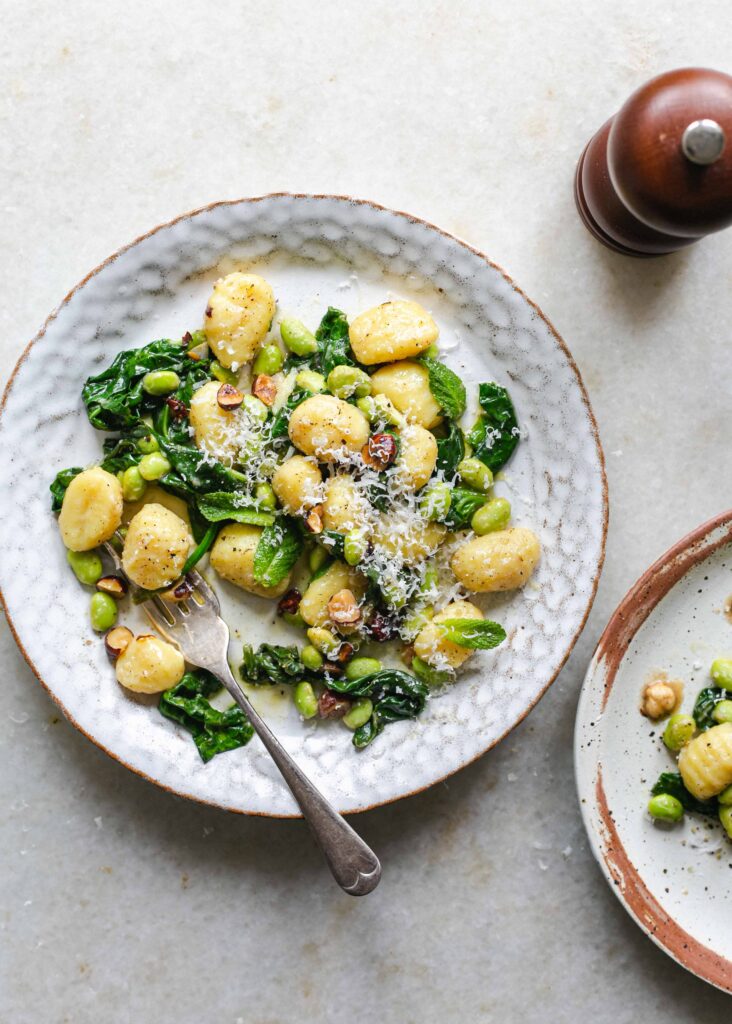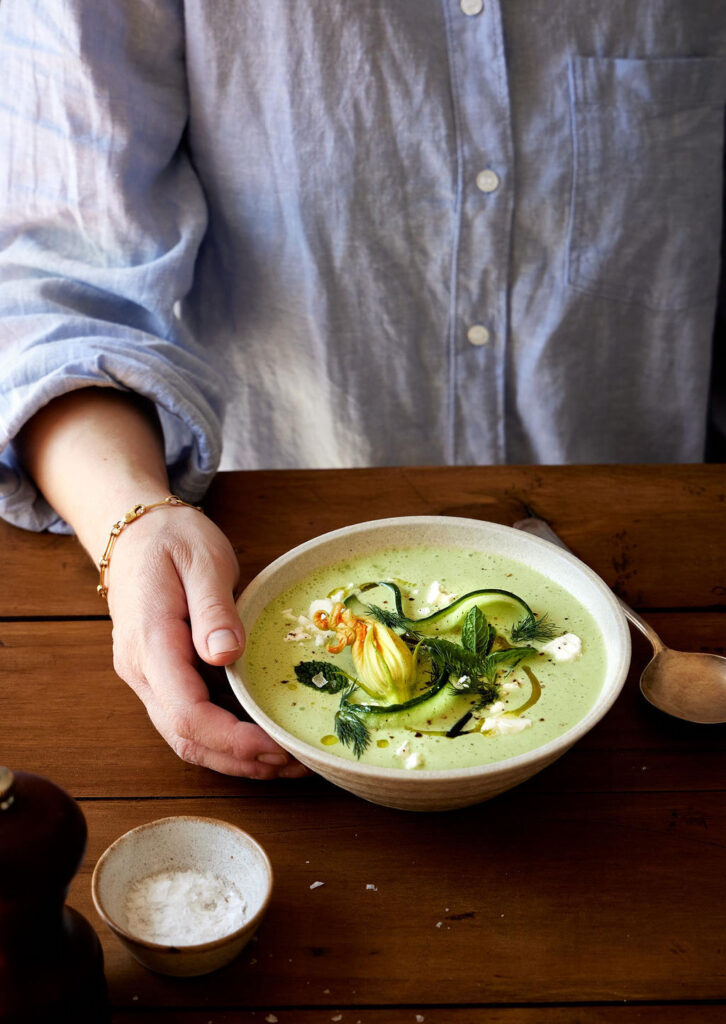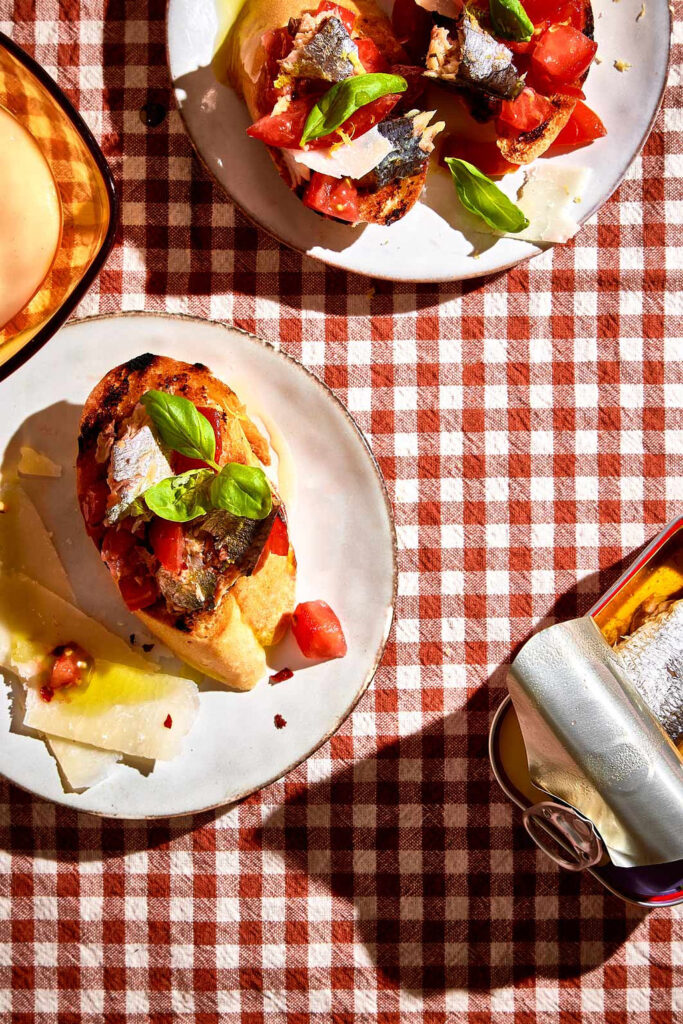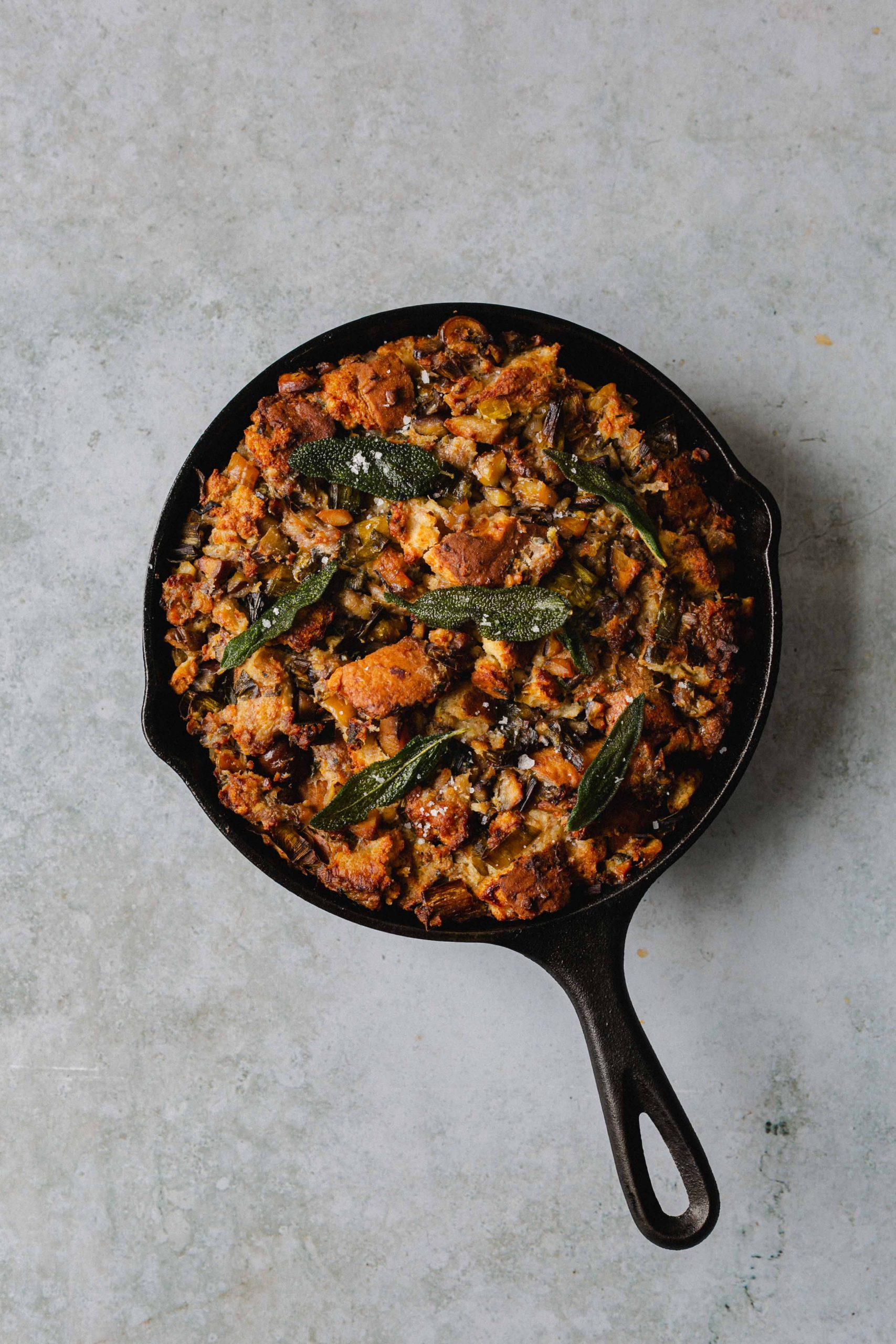
Gluten free and low FODMAP pork, chestnut and sage stuffing! Along with roast potatoes and Yorkshire puddings, stuffing is up there as one of the best parts of a roast dinner for me. I like it crunchy on top and juicy in the middle, packed together but not too packed together, if you know what I mean, and preferably lifted with a little clementine zest.
Recipes are normally packed full of onion, gluten and dried fruits such as apple, which for those of us with sensitive guts (especially at Christmas) can be quite a lot. This stuffing recipe uses leeks and chives instead of onion, along with garlic infused olive oil, robust gluten free bread and naturally sweet and nutty chestnuts (side note: I’m currently obsessed with these easy to use ones from Merchant Gourmet). Cooking it in its own dish means the top has a chance to get golden and crunchy, the filling to cook through and it emerges looking rather pretty for your dining table too. The perfect accompaniment to your roast dinner.
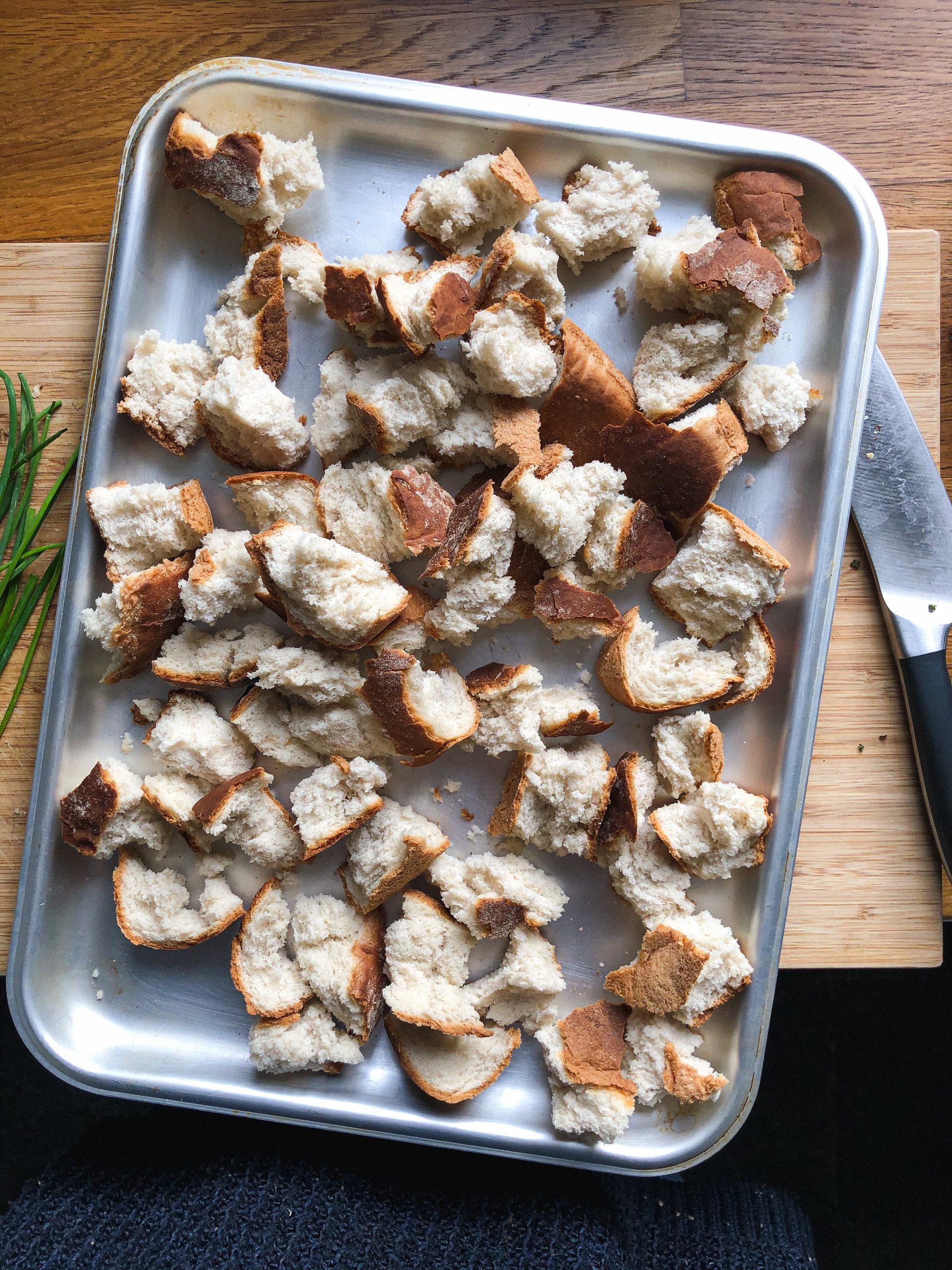
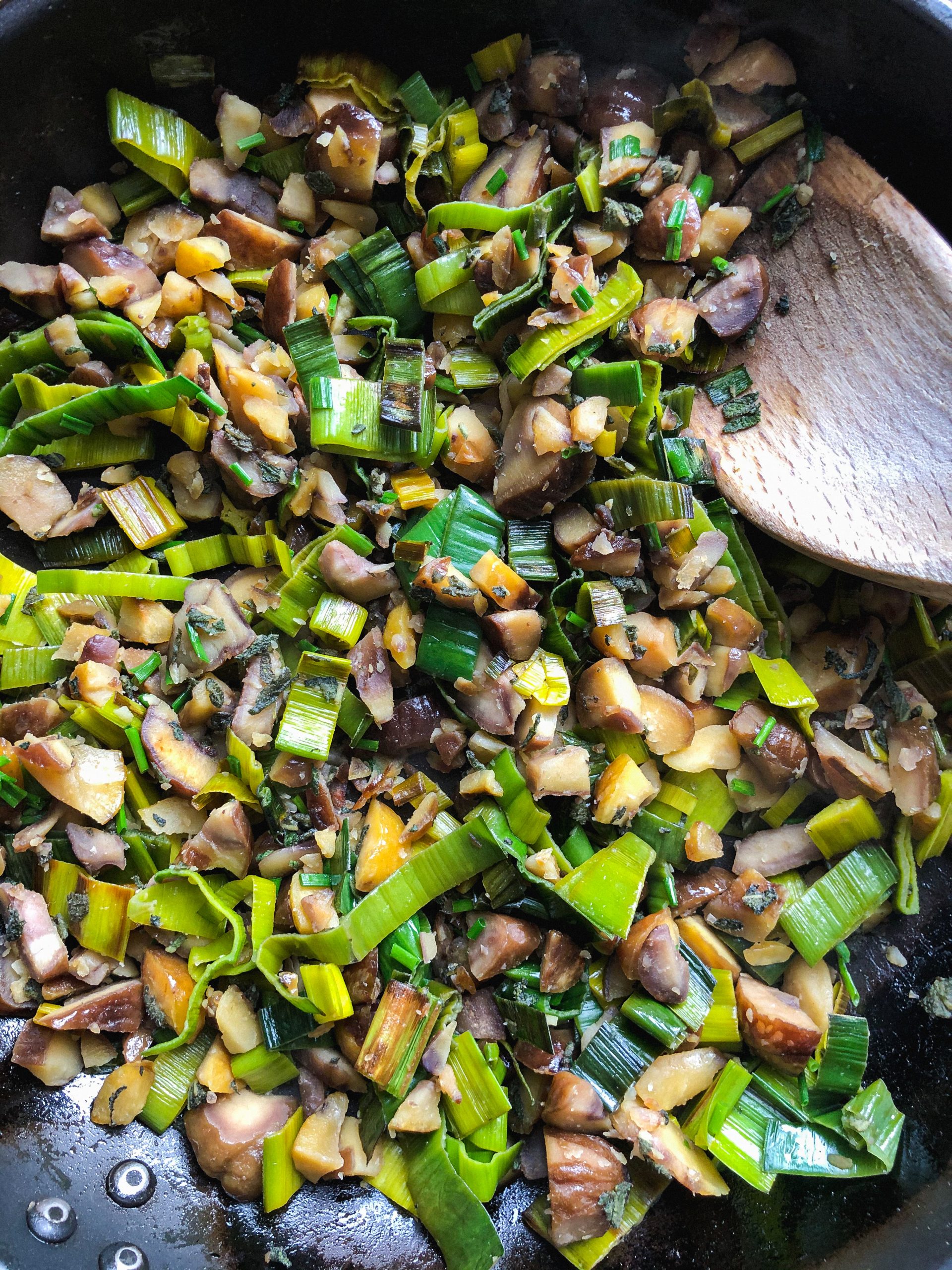
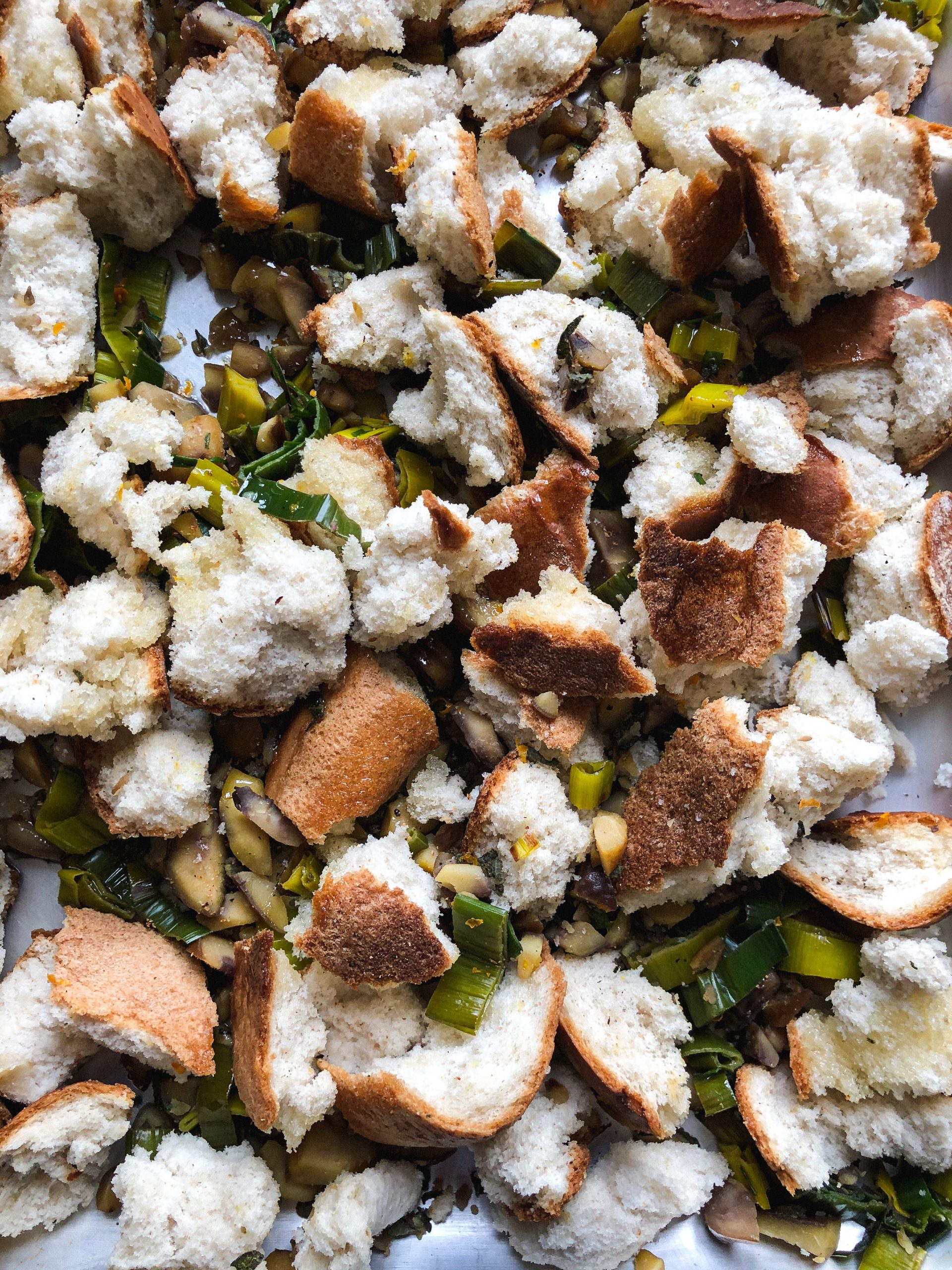
Low FODMAP stuffing recipe notes!
- If your bread is a couple of days old, then skip the first step of drying it out in the oven. Gluten free bread can get a bit soggier than gluten-full bread, so this step just helps it to keep its shape a bit and get that crunch on top
- Small amounts of good quality sourdough bread are allowed on the low FODMAP diet, but to lessen the FODMAPs and cater for more dietary requirements, I’ve used gluten free bread for this recipe, which as along as you dry out a bit before (see above step!) I think works just as well
- Double check your sausages don’t contain any onion or garlic, sneaky FODMAPs can often be hiding in them
- Any woody herbs such as rosemary or thyme work in this recipe
- Pancetta fried off with the leeks and chestnuts would be a delicious addition
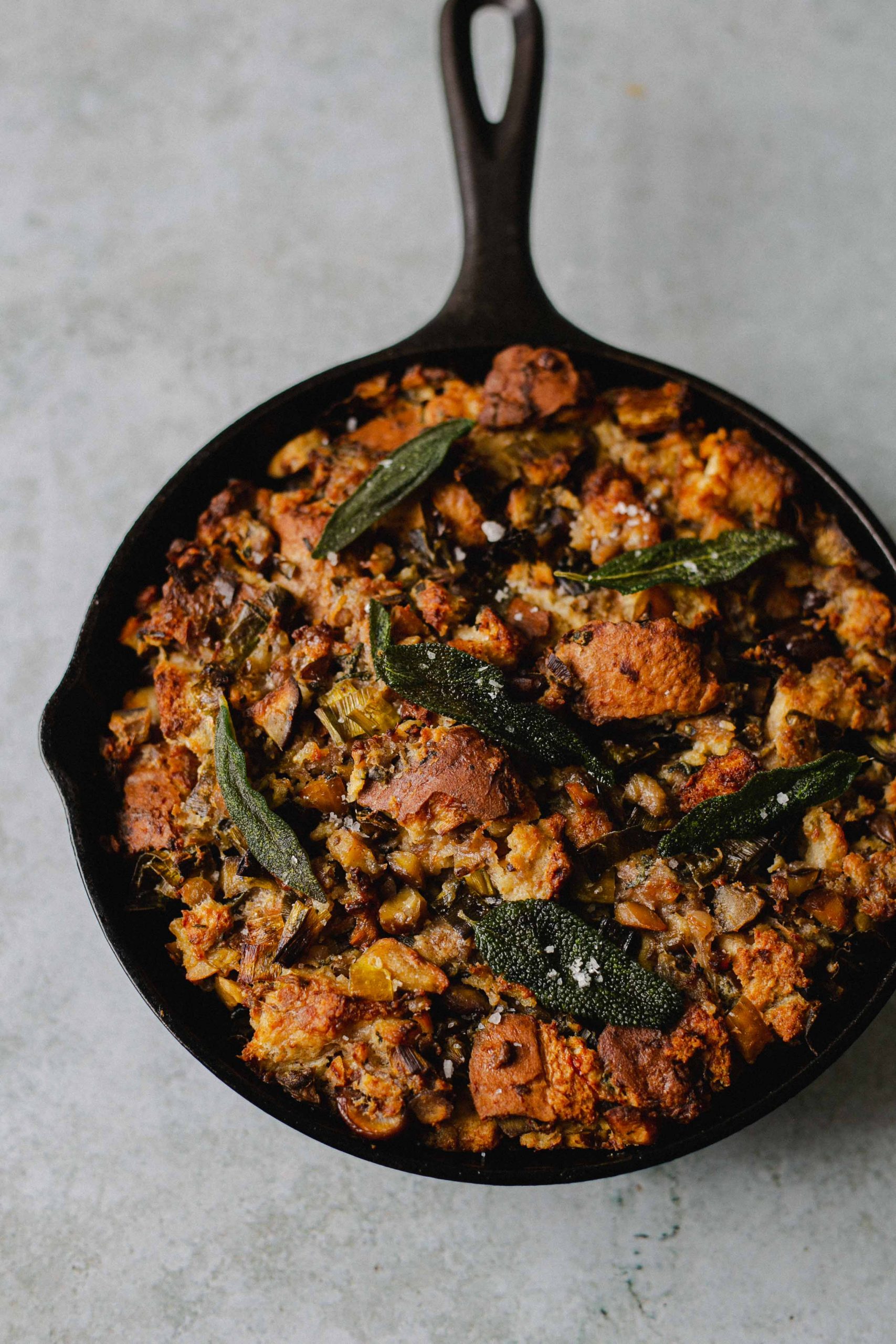
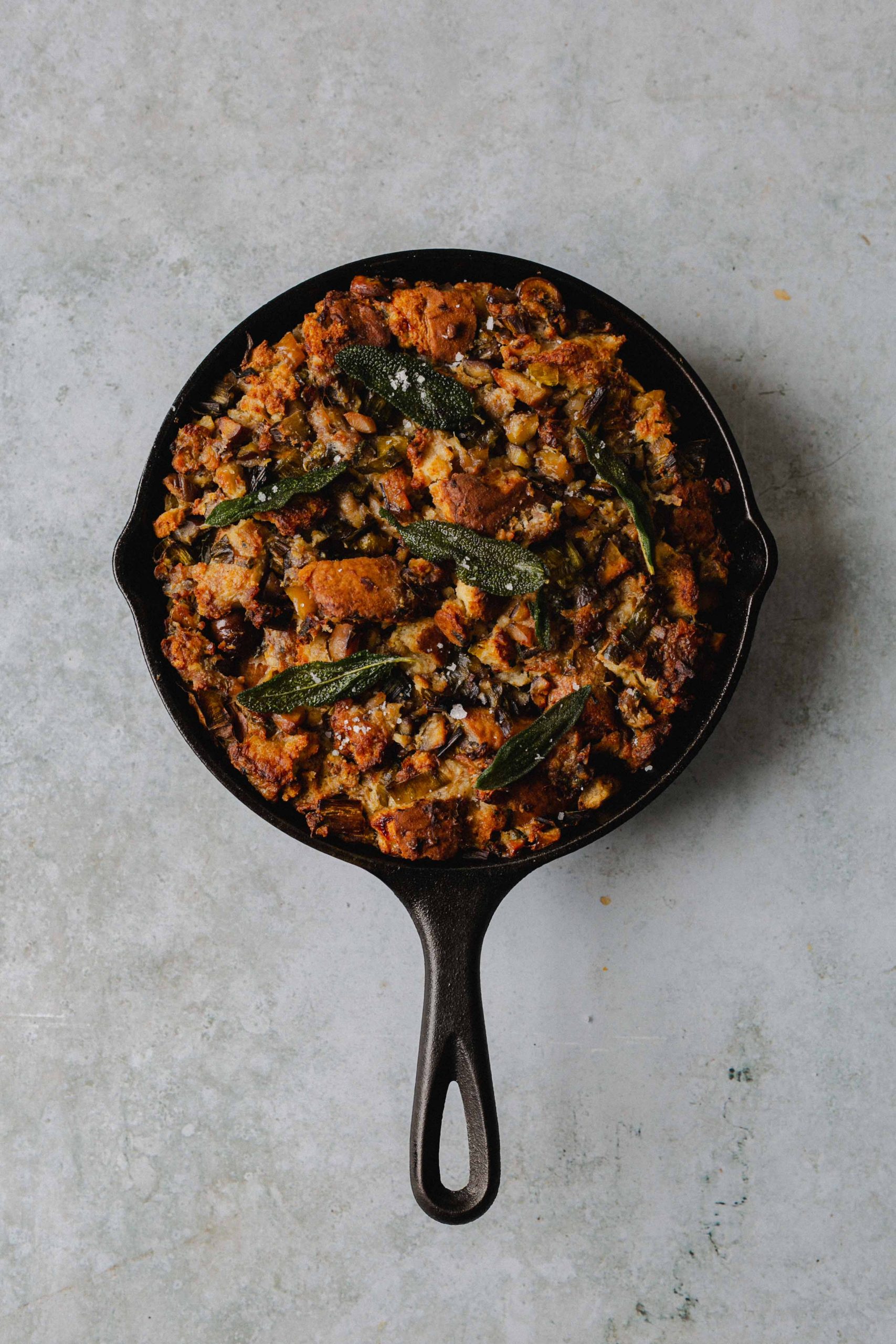
Ingredients
400 g gluten free bread
2 tablespoons garlic infused olive oil
2 leeks, green parts only (about 100g), roughly chopped
small bunch of sage leaves, 10 leaves reserved and the rest finely chopped
small bunch of chives, finely chopped
180g chestnuts, roughly chopped
400g gluten free and FODMAP friendly pork sausages
1/2 teaspoon ground nutmeg
Zest of 1 clementine
sea salt and cracked black pepper
1 large egg
250ml lactose free milk or almond milk
small knob unsalted butter
extra virgin olive oil, for drizzling
Method
Preheat the oven to 180C, 160C fan. Tear the bread into small chunks and place in the oven for 5-10 minutes, or until slightly dried out. Remove from the oven and put to one side to cool.
Meanwhile, heat the garlic infused olive oil in a medium pan and when glossy, add the chopped leek tops, sage and chives. Cook for 5 minutes, or until the leeks are starting to soften, then add in the chopped chestnuts. Continue to cook for another couple of minutes, then add a splash of white wine or white wine vinegar to the pan and scrape up any golden bits that might have gotten stuck. Cook for a further minute then turn off the heat. Stir through the nutmeg, clementine zest and a generous amount of seasoning. Spoon onto the tray with the bread and allow to cool.
Once completely cool, move the bread and leek mix into a large bowl. Cut the sausage casings and add the sausage meat into the bowl as well and with clean hands, mix together until combined.
In a separate bowl or mug, whisk together the egg and milk and add three quarters to stuffing mix, continuing to mix with your hands until combined. Add a little more if you think you need to – you want the bread to be hydrated and the mix to be wet but not too wet.
Preheat the oven to 180C, 160C fan, gas mark 4 and rub the inside of a medium baking dish (roughly 20cm x 20cm) with half the butter. Transfer the stuffing into the dish and gently flatten it down, topping with a few more pieces of butter.
Bake for about 40 minutes, or until golden, piping hot and cooked through. If the top starts to brown too much, simply cover with foil. I like to tumble over the remaining sage leaves half way through cooking, drizzling each with a little more olive oil, so that they don’t burn but have a chance to get crisp and delicious.
